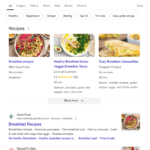
If you’re concerned about the effectiveness of your lead generation strategy, you’re not alone. As we approach 2025, B2B marketers increasingly adopt data-driven strategies to refine their lead management processes and ensure they deliver sales-ready leads optimally.
About 50% of marketers prioritize lead generation in their campaigns and 65% cite generating traffic and leads as their biggest marketing challenge, per HubSpot’s 2024 State of Marketing Report. Lead scoring is crucial for tackling this challenge by ranking and assessing prospects’ readiness to buy.
A well-designed lead scoring model enables sales teams to focus on leads most likely to convert, enhancing efficiency and revenue potential. For those using marketing tools such as HubSpot, Zapier, Salesmate, Salesforce, Leadfeeder and Monday.com, crafting effective lead-scoring criteria involves integrating diverse data points:
- Engagement data.
- Demographic profiles.
- Persona insights.
- Company characteristics.
Here are some best practices to ensure your lead scoring model is both impactful and adaptable for 2025.
1. Incorporate engagement data for real-time insights
Understanding engagement data is key to gauging a prospect’s interest and readiness to purchase. It provides insights into how your leads interact with your brand and indicates their position in the buyer’s journey. Consider tracking the following engagement data points.
Website interactions
Page visits, time spent on pages, content downloads, blog reading frequency and form fills are all key indicators of interest. The more in-depth and relevant the page (like pricing or case studies), the higher the score.
Email interaction
Opening emails is valuable, but actions like clicking through to your site or engaging with a product demo indicate stronger intent. Assign higher scores to actions that drive engagement, such as visiting sales pages or downloading lead magnets.
Social media activity
Following your company, engaging with your posts or sharing your content are critical indicators. They suggest a prospect’s growing familiarity and affinity with your brand.
Event participation
If a lead registers for webinars or attends live events, these high-intent signals should significantly impact their score.
2. Use demographic data to identify fit
Beyond engagement, understanding demographic data is key in evaluating how well a lead aligns with your target market. It’s all about knowing who you’re talking to and ensuring they fit the profile. Important data points to keep an eye on include:
Job title and role
Leads holding senior decision-making positions, such as C-suite executives, VP-level personnel or key department heads, should be scored higher. In the same way, those with job titles that are relevant to your product offering should be prioritized.
Industry
Depending on your product or service, certain industries will be a better fit than others. Assign more points to leads in industries you actively target, while leads from less relevant industries should have lower scores or even negative scores.
Geographical location
If your business focuses on a specific geographic region or offers country-specific offerings, prioritize leads from those areas. Conversely, lower points should be given to leads outside your service area.
Dig deeper: A scoring model your GTM team will fall in love with
3. Integrate persona-based data for effective lead analysis
Personas are like the fictional characters of your ideal customers, crafted from real data and insights. By using persona information for lead scoring, you can ensure that you’re focusing on leads that fit your ideal customer profile. Let’s dive into how you can effectively use persona data:
Buyer’s journey stage
Leads in the awareness stage might not be ready for direct sales engagement, but a lead showing characteristics of someone in the decision stage should be scored higher. Track content consumption behavior to understand where they are in the buyer’s journey.
Pain points
If a lead’s behavior (e.g., downloading specific content or attending webinars) suggests they’re facing common challenges solved by your product, their score should reflect this.
Communication preferences
Leads that respond positively to certain communication methods (like email, direct messages or even phone calls) should have points added based on engagement channel fit.
4. Use company attributes and ICP scoring
It’s not just about the lead itself; understanding the company behind it is crucial. Think of company attributes as your compass to determine if the lead’s organization aligns with your target market. Critical attributes include:
Company size
The size of the company can often dictate the viability of a lead. If your product or service is tailored to enterprises, assign higher scores to leads from larger companies. Conversely, if you’re targeting SMBs, adjust your scoring model accordingly.
Revenue
Many businesses filter their prospects by revenue size to ensure leads have the financial capacity to make a purchase. Use data enrichment tools like Salesmate or Clearbit to supplement your scoring model with revenue data.
Technology stack
Leads using technologies that integrate with or complement your solution should receive additional points. This is especially useful in SaaS-based models where compatibility with existing infrastructure is key to sales success.
Growth trajectory
Companies on a growth trajectory (e.g., based on funding rounds or hiring sprees) can be more likely to invest in new solutions. This information can be integrated into your CRM and used to boost lead scores accordingly.
Existing customers
Take note of existing customers to identify opportunities for up-selling and cross-selling, which can be beneficial for improving lead scoring. Consider analyzing their purchase history and preferences to tailor recommendations and enhance customer engagement.
On ICP scoring
An effective way to determine whether a potential customer is a good fit for your product is to use ICP (ideal customer profile) scoring. This helps you identify leads that resemble your best customers by examining traits like industry, company size, budget and buying habits.
By turning these traits into a score, you can prioritize leads more likely to convert, making better use of resources and improving sales. Incorporating ICP scoring into your lead process allows your marketing and sales teams to focus on high-potential leads, driving growth and building stronger relationships.
Dig deeper: Lead generation and marketing automation: How they work together
5. Use negative scoring to avoid wasting resources
Just like it’s vital to give a thumbs-up to promising leads, it’s also key to use negative scoring to put poor-fit leads on the back burner. Have you ever noticed how some leads just don’t quite match up with what your ideal customer looks like?
Negative scoring can help with that. It prevents wasting resources on leads with low potential or poor alignment with your company’s products and services. For instance, you might consider:
Job titles not relevant to sales
If a lead holds a position that isn’t typically involved in the buying decision (e.g., interns or administrative assistants), assign negative points.
Unsubscribes or disengagement
Leads who consistently fail to engage with your content or have unsubscribed from communications may not be worth pursuing.
Competitors
Leads working for competitor organizations should either be deprioritized or flagged for a separate competitive intelligence process.
Recently closed-lost deals
If a lead has recently been part of a lost deal, there may be little value in continuing to pursue them at this time.
Recently unqualified leads
If a lead has been disqualified through previous interactions or does not meet the minimum requirements for your ideal customer profile, they can be scored negatively to avoid wasting resources on pursuing them.
Regularly review and refine your scoring model
Lead scoring is an ongoing process that requires regular updates to stay effective, especially as buyer behaviors and market conditions shift. As your business evolves, your scoring model should adapt to new trends, customer behaviors and goals.
Continuously refining your scoring criteria with input from sales teams helps prioritize high-quality leads, improving conversion rates and driving growth. A dynamic lead scoring model boosts ROI by ensuring your team focuses on leads most likely to convert, keeping your strategy efficient and adaptable in a changing market.
Dig deeper: Lead scoring for existing customers: Best of the MarTechBot
The post How to revamp your lead scoring strategy for 2025 appeared first on MarTech.

![How I Use Landing Page Split Testing to Find Untapped Marketing Potential [+ 12 Places to Start]](https://bloggerseo.com.ng/wp-content/uploads/2025/01/how-i-use-landing-page-split-testing-to-find-untapped-marketing-potential-12-places-to-start-150x60.png)






